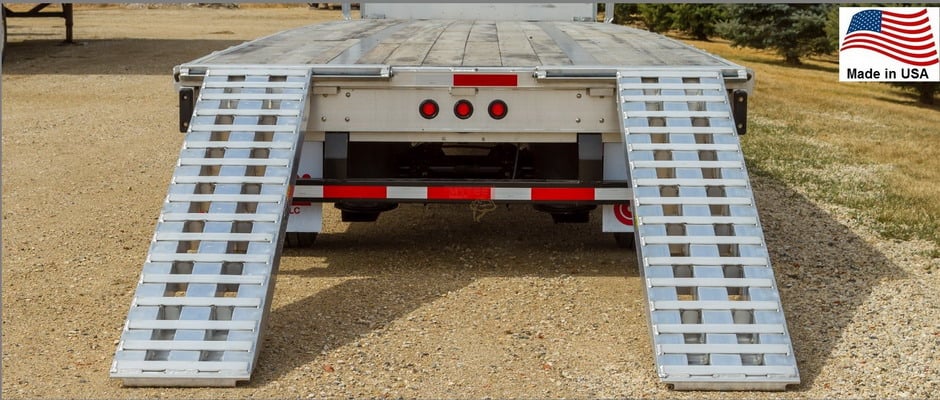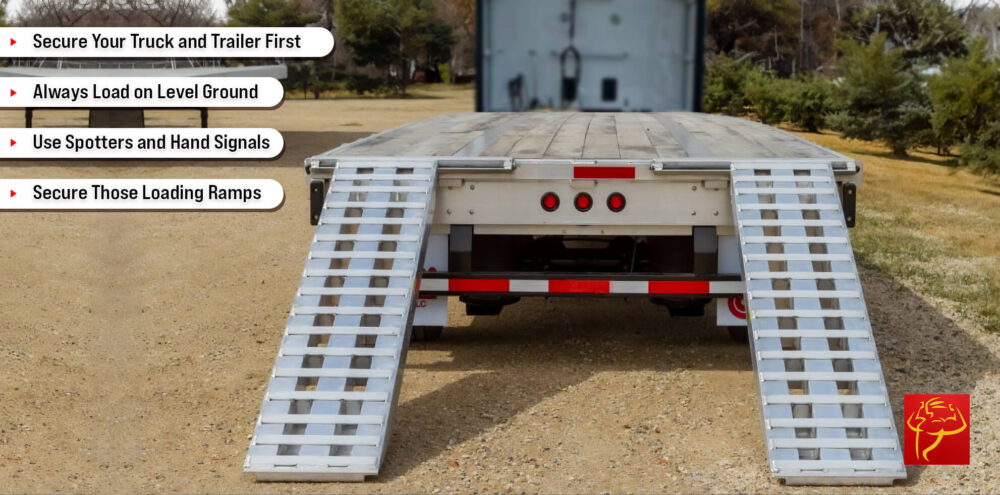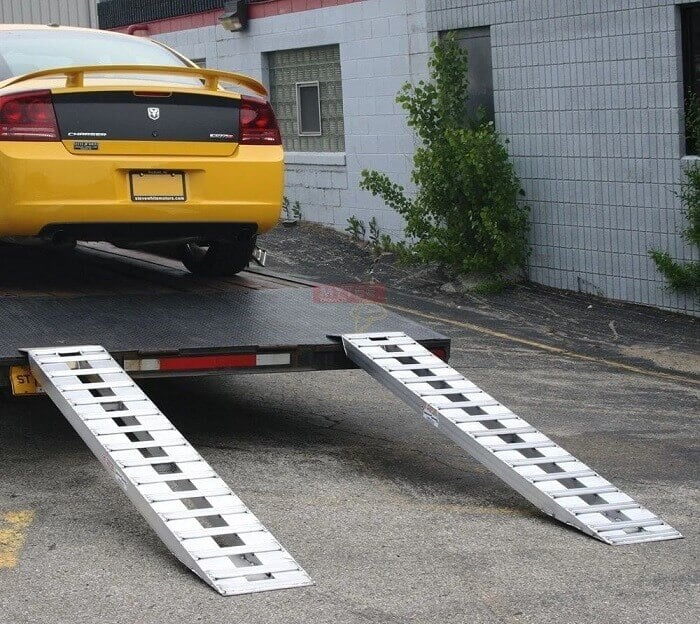The Drive’s Max Goldberg put together a great piece in April of 2017 detailing the hazards of loading cars onto trailers incorrectly. His post was both informative and amusing at the same time. It included a series of YouTube videos that show just what can go wrong if you attempt to load a flatbed trailer without knowing exactly what you’re doing.
In fairness, each of the videos appears to show amateurs who don’t do this for a living. But even professionals can learn a thing or two by watching. Needless to say that driving a vehicle up a set of trailer-loading ramps and onto the deck is not as easy as it looks. The laws of physics offer too many possibilities for things to go wrong.
Secure Your Truck and Trailer First
One of the videos in Goldberg’s post shows two men attempting to load a pickup truck full of used tires onto the back of a trailer hooked to a second pickup. The spotter sizes things up before speaking to the driver of the tire-filled truck. It is not until the driver begins moving forward that trouble ensues.
Apparently, the spotter failed to secure the other truck and trailer. As soon as the tire-filled truck began moving up the trailer loading ramps, the entire rig started moving forward. It eventually jackknifed and pinned the second truck to a light post.
The obvious lesson here is to make sure your truck and trailer are secured before you begin loading. That means engine off, brakes applied, and blocks in place. The last thing you need is for your rig to shift while your loading ramps are engaged with a full load.

Always Load on Level Ground
Another video depicts someone attempting to load a pickup truck on a surface that isn’t level. The loading ramps appear to have a hinge that allows them to be positioned at different angles for just this purpose. But that doesn’t make them safe. As the truck begins making its way up the ramps, the front axle passes over the hinge and that’s the end of it. The rear end of the ramps kick up and dig into the frame of the truck.
Loading on a level surface is a no-brainer. Loading ramps are only as sturdy as they can be on level ground. Loading on a surface that isn’t level is tempting fate, as that pickup truck driver discovered.
Use Spotters and Hand Signals
A couple of the videos clearly show that using more spotters would have been helpful. Along with those spotters go hand signals that allow them to communicate with the driver without speaking. This is something experienced flatbed drivers are intimately familiar with. The more spotters, the safer the loading process.
Secure Those Loading Ramps
Finally, one of the videos depicts someone attempting to load a car into the back of a dry van. We assume this was a household move. At any rate, the car makes it about three-quarters of the way up the ramps before stopping for a brief second. The driver then accelerates, causing the rear wheels to kick the loading ramps out. Now the car is hanging off the back of the trailer.
What can we learn from this video? That trailer loading ramps should always be firmly and securely affixed before loading begins. Loading ramps built for flatbed trailers come with pins for this very reason. You should never attempt to run a load up a set of ramps if those ramps are not firmly secured in place.











